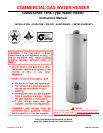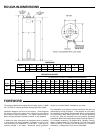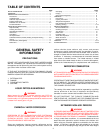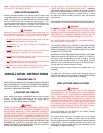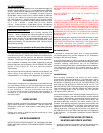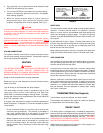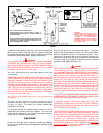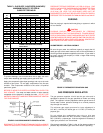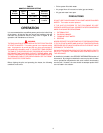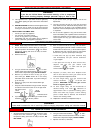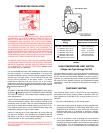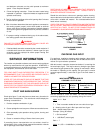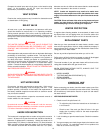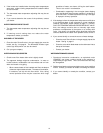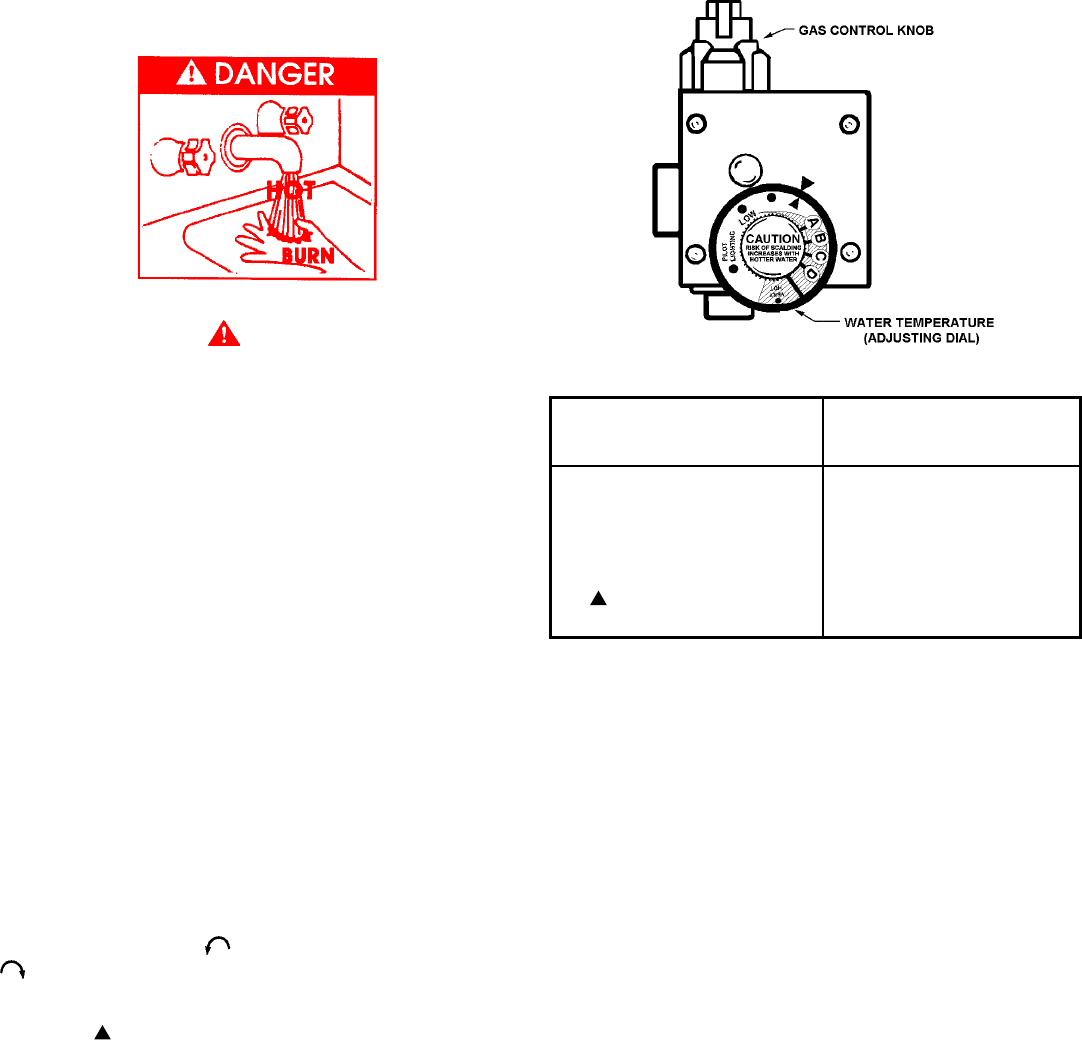
11
TEMPERATURE REGULATION
DANGER
THIS WATER HEATER IS EQUIPPED WITH AN ADJUSTABLE
THERMOSTAT TO CONTROL WATER TEMPERATURE. HOT
WATER TEMPERATURES REQUIRED FOR AUTOMATIC
DISHWASHER AND LAUNDRY USE CAN CAUSE PAINFUL
SCALDING WITH POSSIBLE SERIOUS AND PERMANENT INJURY.
THE TEMPERATURE AT WHICH INJURY OCCURS VARIES WITH
THE PERSON’S AGE AND THE TIME OF THE EXPOSURE. THE
SLOWER RESPONSE TIME OF CHILDREN, AGED OR DISABLED
PERSONS INCREASES THE HAZARDS TO THEM. NEVER ALLOW
SMALL CHILDREN TO USE A HOT WATER TAP, OR TO DRAW
THEIR OWN BATH WATER. NEVER LEAVE A CHILD OR DISABLED
PERSON UNATTENDED IN A BATHTUB OR SHOWER.
THE WATER HEATER SHOULD BE LOCATED IN AN AREA WHERE
THE GENERAL PUBLIC DOES NOT HAVE ACCESS. IF A SUITABLE
AREA IS NOT AVAILABLE, A COVER SHOULD BE INSTALLED OVER
THE THERMOSTAT TO PREVENT TAMPERING.
Suitable covers
are available from your distributor.
It is recommended that lower water temperatures be used to avoid
the risk of scalding. It is further recommended, in all cases, that
the water temperature dial be set for the lowest temperature which
satisfies your hot water needs. This will also provide the most
energy efficient operation of the water heater. The water
temperature adjusting dial was factory set at the lowest
temperature; all the way clockwise to the mechanical stop. Turning
the dial counterclockwise
increases temperature and clockwise
reduces temperature.
SETTING THE WATER HEATER TEMPERATURE AT 120°F (49°C)
(APPROX. "
" MARK ON FACE OF THERMOSTAT) WILL REDUCE
THE RISK OF SCALDS. Some states require settings at specific
lower temperatures.
Figure 6 shows the approximate water temperatures produced at
various thermostat dial settings. Short repeated heating cycles
caused by small hot water uses can cause temperatures at the
point of use to exceed the thermostat setting by up to 30°F (17°C).
If you experience this type of use you should consider using lower
temperature settings to reduce scald hazards.
Valves for reducing point of use temperature by mixing cold and
hot water are available. Also available are inexpensive devices
that attach to faucets to limit hot water temperatures. Contact a
licensed plumber or the local plumbing authority.
SHOULD OVERHEATING OCCUR OR THE GAS SUPPLY FAIL TO
SHUT OFF, TURN OFF THE MAIN MANUAL GAS Shut-off VALVE TO
THE APPLIANCE.
Temperature Time to Produce 2nd & 3rd
Setting Degree Burns on Adult Skin
VERY HOT = APPROX.180°F (82°C) Nearly instantaneous
D = APROX. 160°F (71°C) About 1/2 second
C = APPROX.150°F (66°C) About 1 1/2 seconds
B = APPROX.140°F (60°C) Less than 5 seconds
A = APPROX.130°F (54°C) About 30 seconds
= APPROX.120°F (49°C) More than 5 minutes
LOW = APPROX.100°F (38°C) - - - - - - - -
FIGURE 6
HIGH TEMPERATURE LIMIT SWITCH
(Single-Use Type Energy Cut Off)
The thermostat has a built-in limit switch which will extinguish the
pilot light in case of excessive water temperatures. The pilot cannot
be relit until the entire thermostat (labeled as single use type) is
replaced. It is important that a serviceman be called to determine
the reason for limit operation and thus avoid repeated thermostat
replacement. Lower the temperature adjustment dial setting on
new control.
CHECKING VENTING
The following steps shall be followed with each appliance
connected to the venting system placed in operation, while any
other appliances connected to the venting system are not in
operation.
1. Seal any unused openings in the venting system.
2. Inspect the venting system for proper size and horizontal pitch,
as required in the National Fuel Gas Code, ANSI Z223.1 or the
CAN/CGA B149 Installation codes and these instructions.
Determine that there is no blockage or restriction, leakage,
corrosion and other deficiencies which could cause an unsafe
condition.
3. So far as is practical, close all building doors and windows
and all doors between the space in which the water heater(s)
connected to the venting system are located and other spaces
of the building. Turn on all appliances not connected to the
venting system. Turn on all exhaust fans, such as range hoods



